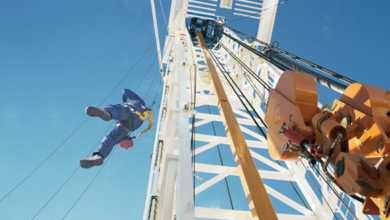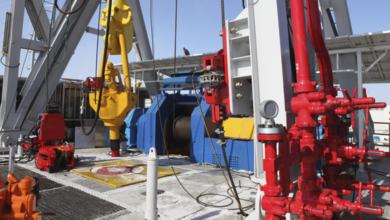Drilling Ahead: IADC workshops shed light on new EU rule
By Mike Killalea, Editor & Publisher
The European Union has implemented the offshore regulatory version of Einstein’s elusive Grand Unified Theory, and IADC is there to help its members understand and operate under the new rules. Unifying the sprawling EU nations beneath a single regulatory umbrella is quite the feat. The draft legislation must be negotiated with 28 Member States and produced in 24 languages. Some countries lack even a native word for “offshore.”
The new EU offshore safety directive, formally EU Directive 2013/30/EU, is designed to mitigate and prevent serious environmental and safety accidents.
“It is a long and complex document because it acts upon the individual Member States and must be set into national regulations before taking effect on the industry,” explained Taf Powell, IADC Executive VP of Policy, Government and Regulatory Affairs. “It’s very like North Sea regulations and is based around the Safety Case.” Prior to joining IADC, Mr Powell served the European Commission as expert adviser in offshore drilling and production. In that capacity, he was instrumental in developing the directive.
Mr Powell noted that licensees and operators are the primary responsible parties under the EU rule. However, drilling contractors also bear significant responsibilities and, thus, should understand the new framework.
IADC workshops
Consequently, IADC organized two workshops during the third week in October, which were led by Mr Powell. During the workshops, Mr Powell underscored key takeaways on what companies must understand about the new regulation.
Since the North Sea is widely recognized as the world’s most highly regulated offshore market, I am unsurprised to hear the scratching of numerous puzzled heads. More rules? Seriously?
Major accidents
“Major accidents have caused concern for safety, environment and security of supply,” Mr Powell said, pointing to the major driver for the directive. Europe, with about 1,000 offshore installations, and 150,000 km of multi-use coastline and 90% of its production to protect, is taking offshore safety seriously.
And even if the North Sea nations were bulletproof – which they are not, as we’ll see shortly – there are glaring holes elsewhere in the European regulatory framework.
“There is a very fragmented approach to regulation in the EU,” Mr Powell noted. For instance, no specific regulatory system exists for the Black Sea.
“The non-North Sea systems are less capable of adaptation to tackle the challenges of the new frontier areas and to satisfy public expectations, even in conventional areas,” he said.
Even among some North Sea nations, transparency is lacking, Mr Powell said. “Most European countries don’t file any reports on offshore safety.” The directive changes that by requiring annual reports from member states.
Further, operators headquartered in the EU must report any major safety event, irrespective of location. For example, an Austrian operator who suffers a major accident in New Zealand must report it to the Austrian regulator.
Einstein never found his unified theory, but IADC strives to unify our members in the pursuit of safety.
Mike Killalea can be reached via email at mike.killalea@iadc.org.



